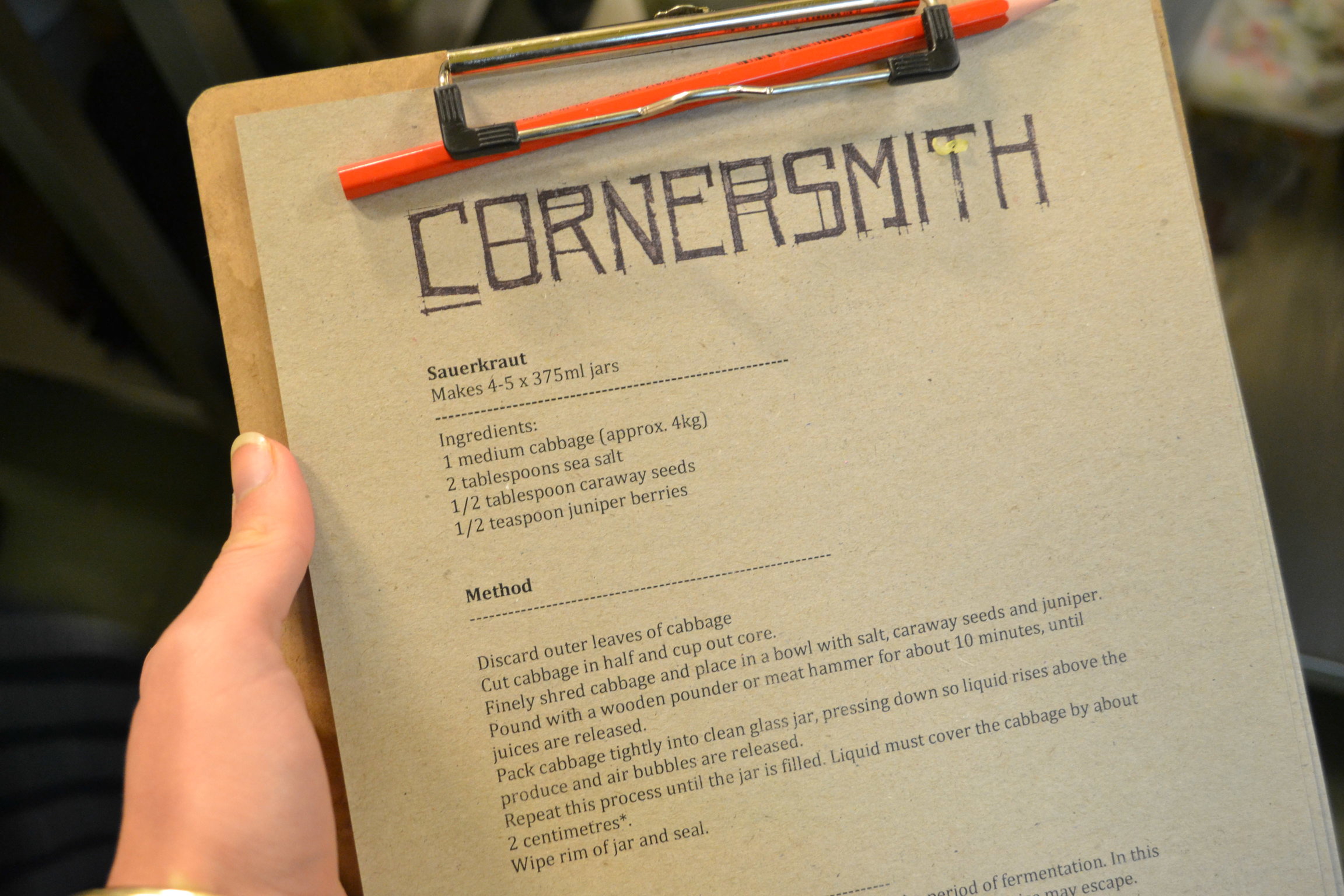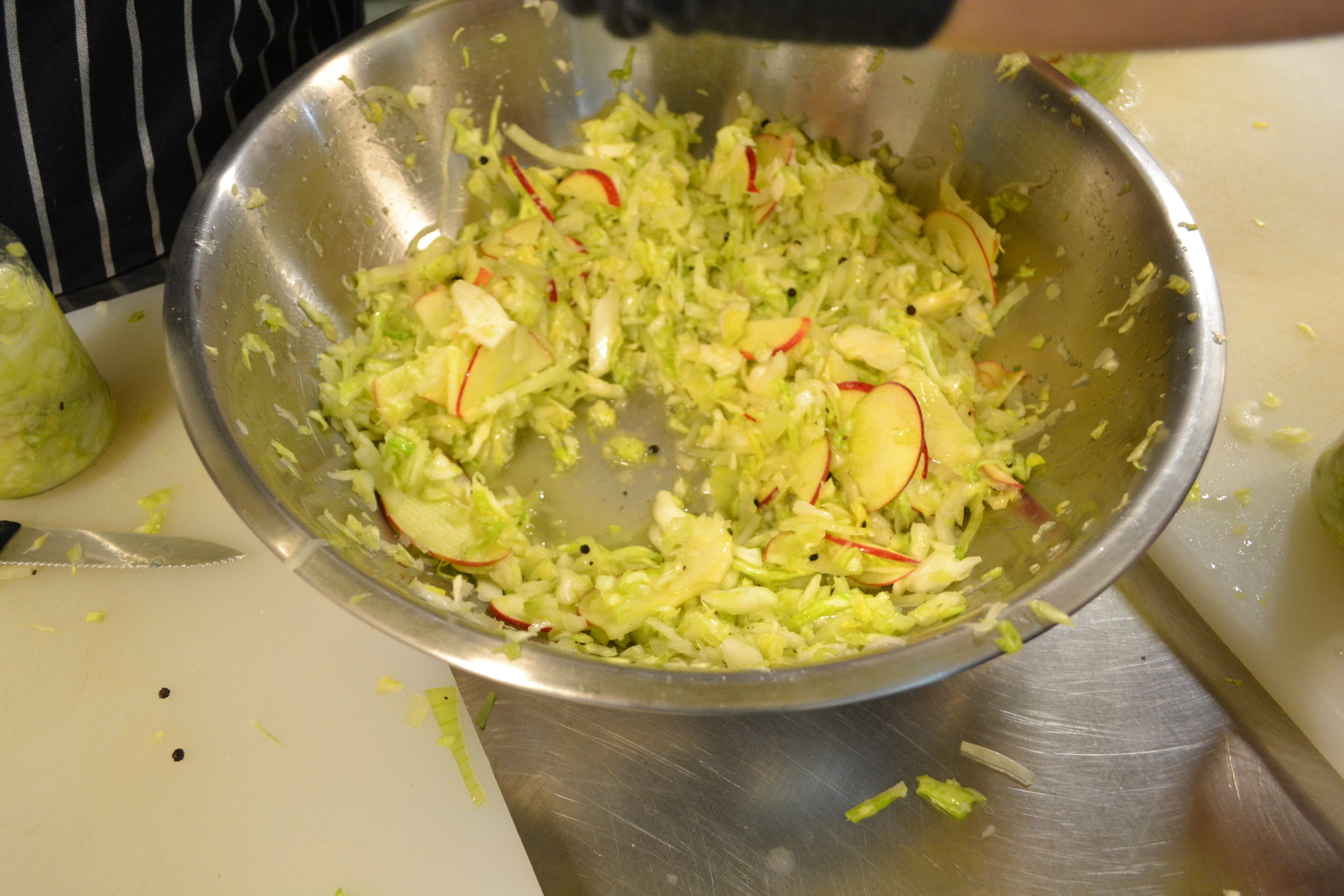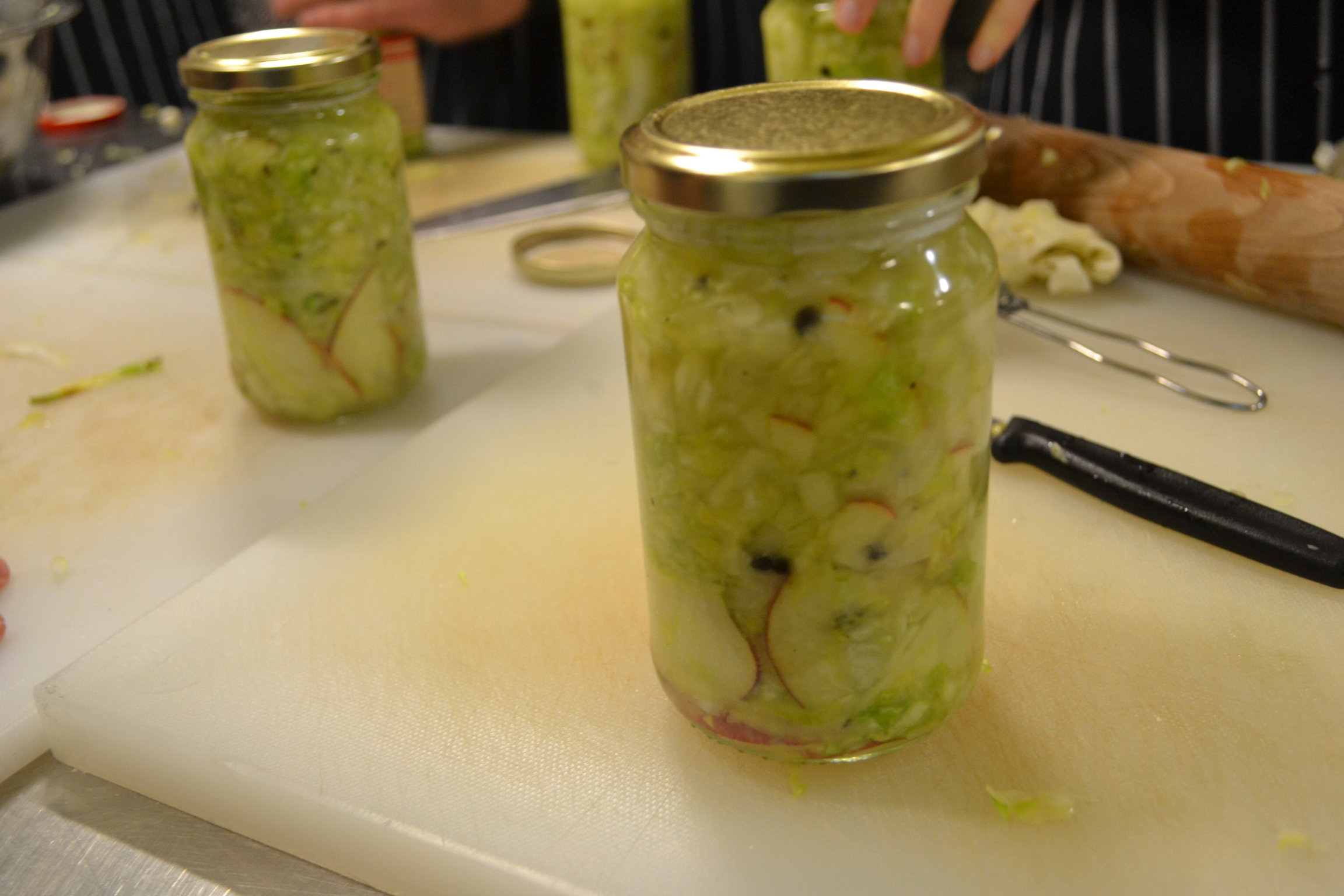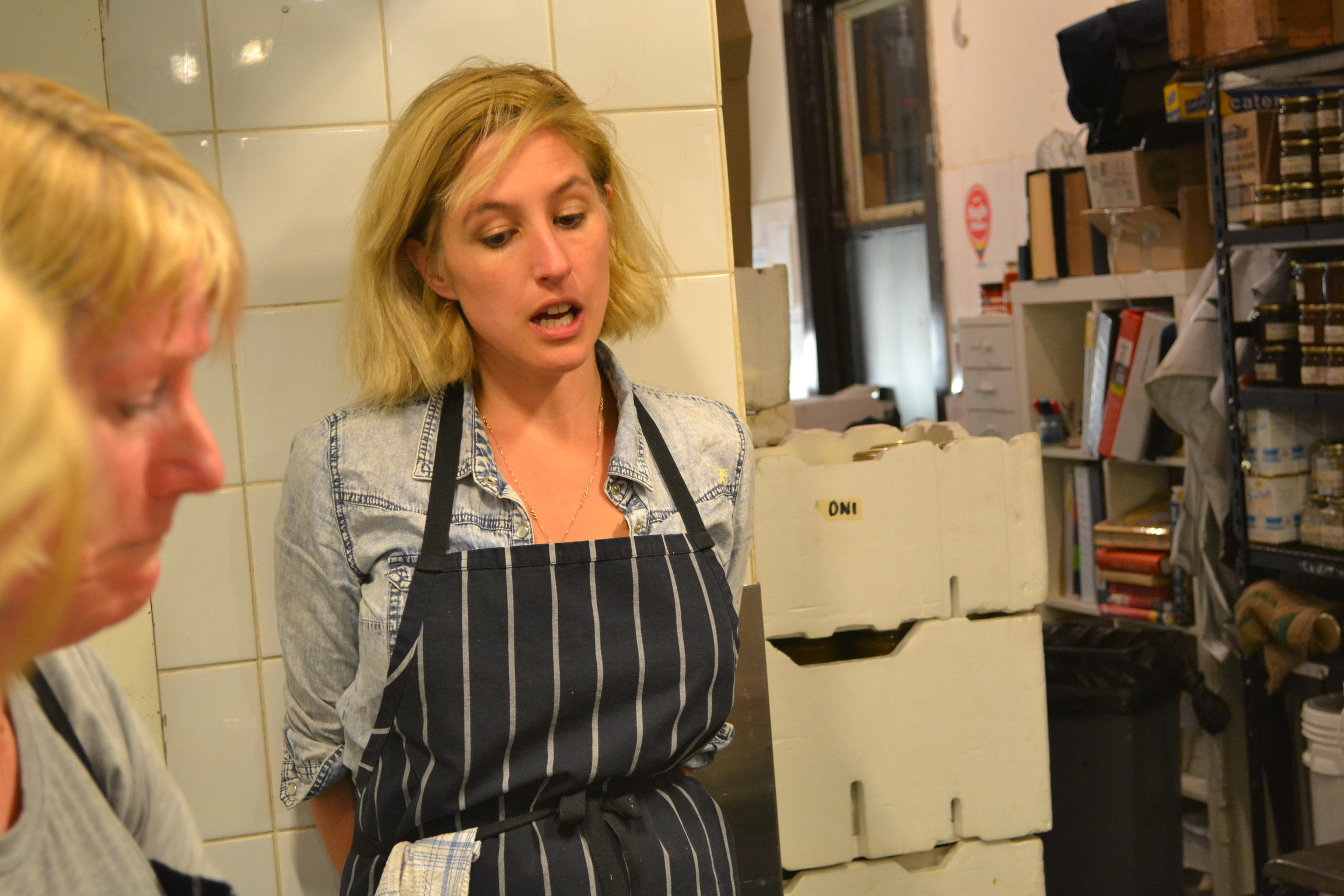Can you cut 1 Tonne of carbon pollution out of your life?
Take the challengeFermenting and pickling your foods is a great way to use up excess produce you grown or veggies that you can only get seasonally. Plus, they come packed with probiotic goodness – the live bacteria that keep your gut happy!
Recently we went to Sydney's Cornersmith to attend a fermenting master class. It was a whole heap of fun and we came out with a trove of great recipes. Here's my favourite.
Ingredients
1 medium cabbage (approx. 4kg)
(Optional) 1 large apple
2 tablespoons sea salt
½ tablespoon caraway seeds
½ teaspoon juniper berries

Method
Discard outer leaves of cabbage.
Cut cabbage in half and cut out core.
Finely slice cabbage and place in bowl with salt, caraway seeds and juniper.
Pound with a wooden pounder or meat hammer for about 10 minutes or until juices are released and the mix has shrunk down in size.

Pack cabbage tightly into clean glass jar pressing down so the liquid rises above the produce and air bubbles are released; repeat this process until the jar is filled, leaving 1 or 2cm at the top – liquid must cover cabbage by about 2cm. Wipe off rim of jar and seal.

Place the jar in a cool dry place for two days – when it's colder you may need to leave it for 7-14 days.
During this time your sauerkraut is fermenting, you'll notice it bubbling and some juices may escape. Just give the jar a wipe down and place it into the refrigerator after the desired amount of time.
Sauerkraut may be eaten immediately but will improve with time (we suggest a week). It'll keep for about a year!

Some notes from master fermenter, Jaimee Edwards
Never uses powdered spices. They can have mould spores which are fine when cooking with heat, but not great for fermenting.
You might notice a bit of mould, you know what, it's ok! White, black, and blue mould are ok; just scrape them off and resubmerge your vegetable mix. Red and pink mould are no good – you'll have to throw it out and start again. Always use your best judgement if it looks, smells, or tastes rancid then it's best not to eat it.
Make sure you properly sterilize your jars. Give them a good wash in hot soapy water, or run them through the dishwasher without any cleaning product. Then put them in the oven at 110 degrees for 10-15 minutes or until they're dry.
If lots of liquid seeps out of your jar during the ferment stage just top it up wit non-chlorinated water.
Put a date and label on your jars so you can keep track of what you have.
Enjoy!

